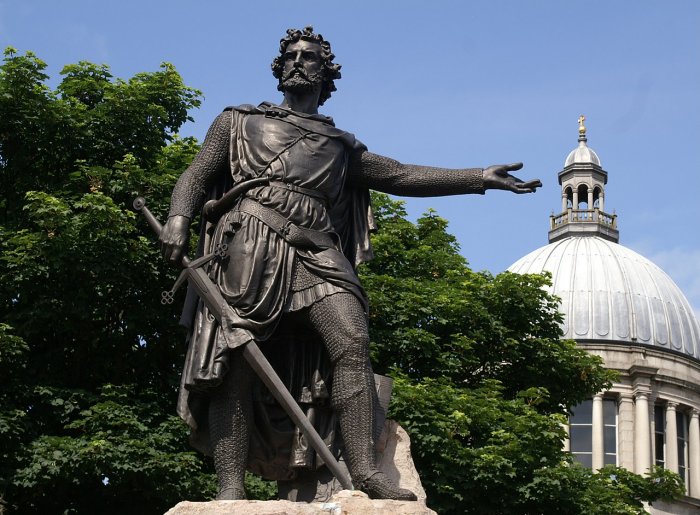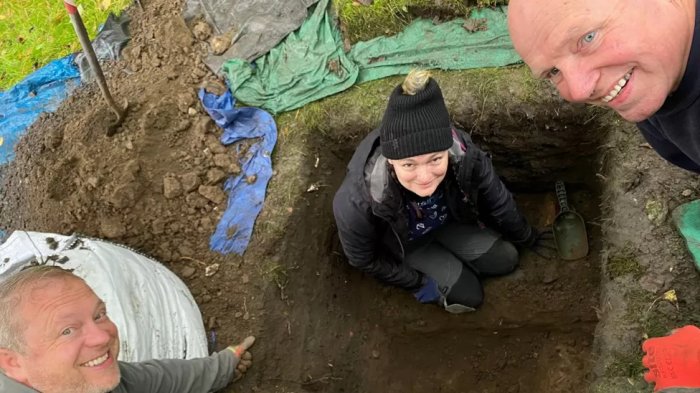Conny Waters – AncientPages.com – The most important road in the history of Scotland has been found in the garden of the Old Inn Cottage, next to the 18th century Old Drip Bridge, a few miles west of Stirling city center.
The Roman road, discovered during an archaeological dig, is 2,000 years old and was used by key historical figures, including William the Conqueror, Oliver Cromwell, William Wallace, Robert the Bruce, as well as every King and Queen of Scotland, and of course, Vikings, Picts and Romans.

The archaeological dig took place in the garden of the Old Inn Cottage. Credit: Stirling Council
Historians have known the existence of the ancient road for years. Still, its precise location was unknown, except that it led up to Stirling Castle on the River Forth, the natural barrier to the Scottish Highlands to the North. Given its strategic importance, it was a road used for military campaigns.
“It is the most important road in Scottish history, so it’s an amazing discovery. To literally walk where Wallace and Bruce went, let alone the Romans, Picts and Vikings is astonishing. It has also never been clear before this find where this road ran.
To the south, the road heads towards Falkirk and would eventually take you to England. To the north, it would take you a crossing over the Tay and the edge of the Roman Empire,” Stirling Council Archaeologist Murray Cook, who led the dig, said.
“It’s amazing to think the likes of William the Conqueror and King Henry VIII had walked through where our garden is now – not many people can say that,” Jennifer Ure, who lives at the cottage with her husband and two children, said.

William Wallace statue. Credit: Public Domain
“I’ve lived in Stirling most of my life, and you know about all the great historical places in the area like Stirling Castle and the Wallace Monument, but I don’t think people appreciate all the other historical events that took place here which this discovery is bringing to light.
I had no idea that the road could have been there until Murray turned up and asked about doing the dig in the garden. When the road was found, I couldn’t help but feel excited, especially given its significance,” she added.

Dr Murray Cook (bottom left) and other members of the dig with the remains of the ancient Roman road. Credit: Stirling Council
“Next year marks the 900th anniversary of Stirling and we’ve world-class built heritage from the last millennium to show for it. This discovery is a reminder that our built heritage goes back a further millennium to when it was the Romans crossing the Forth and starting the story of Stirling.
See also: More Archaeology News
“Stirling’s place at the heart of Scotland and the heart of Scottish history is something we are very proud of and understanding more about the route of the Roman Road adds another chapter to share with the many visitors who come from around the world to experience all that Stirling has to offer,” Stirling Council leader Councillor Chris Kane said.
Written by Conny Waters – AncientPages.com Staff Writer





